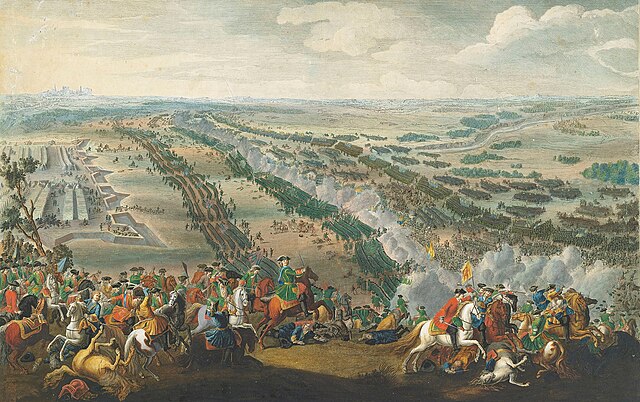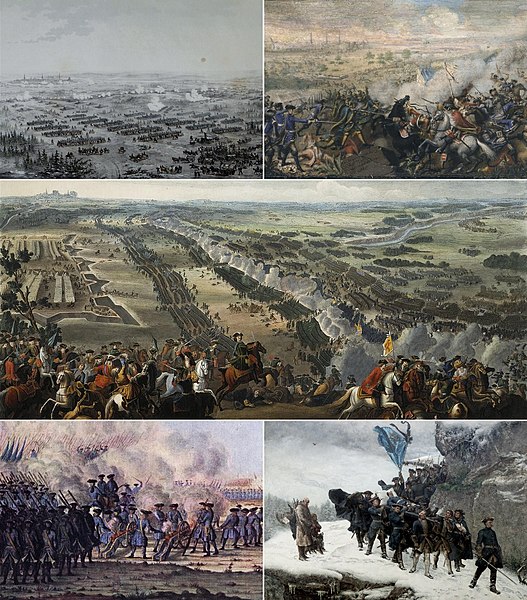Norway during the Great Northern War
The Great Northern War was the war fought between a coalition of Denmark–Norway, Russia and Saxony-Poland on one side and Sweden on the other side from 1700 to 1721. It started by a coordinated attack on Sweden by the coalition in 1700, and ended 1721 with the conclusion of the Treaty of Nystad, and the Stockholm Treaties. As a result of the war, Russia supplanted Sweden as the dominant power on the shores of the Baltic Sea, becoming a major player in European politics.
Bringing Home the Body of King Karl XII of Sweden (Gustaf Cederström. 1884)
Battle of Poltava (Pierre-Denis Martin, 1726)
Capture of Helsingborg (Claus Moinichen. 1688)
Victory at Narva (Gustaf Cederström, 1905)
The Great Northern War (1700–1721) was a conflict in which a coalition led by the Tsardom of Russia successfully contested the supremacy of the Swedish Empire in Northern, Central and Eastern Europe. The initial leaders of the anti-Swedish alliance were Peter I of Russia, Frederick IV of Denmark–Norway and Augustus II the Strong of Saxony–Poland–Lithuania. Frederick IV and Augustus II were defeated by Sweden, under Charles XII, and forced out of the alliance in 1700 and 1706 respectively, but rejoined it in 1709 after the defeat of Charles XII at the Battle of Poltava. George I of Great Britain and the Electorate of Hanover joined the coalition in 1714 for Hanover and in 1717 for Britain, and Frederick William I of Brandenburg-Prussia joined it in 1715.
From left to right: Battle of Narva (1700) Charles XII crossing the Düna (1701) Peter I at the Battle of Poltava (1709) Battle of Gadebusch (1712) Bringing Home the Body of King Charles XII (1718)
The bombardment of Copenhagen, 1700
Battle of Riga, the first major battle of the Swedish invasion of Poland, 1701
Battle of Gangut (Hanko)








